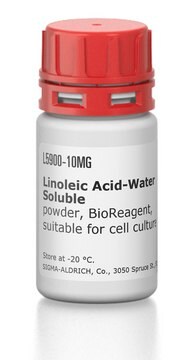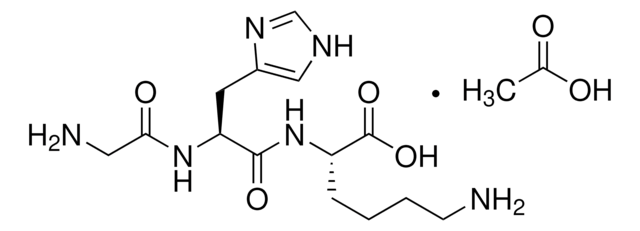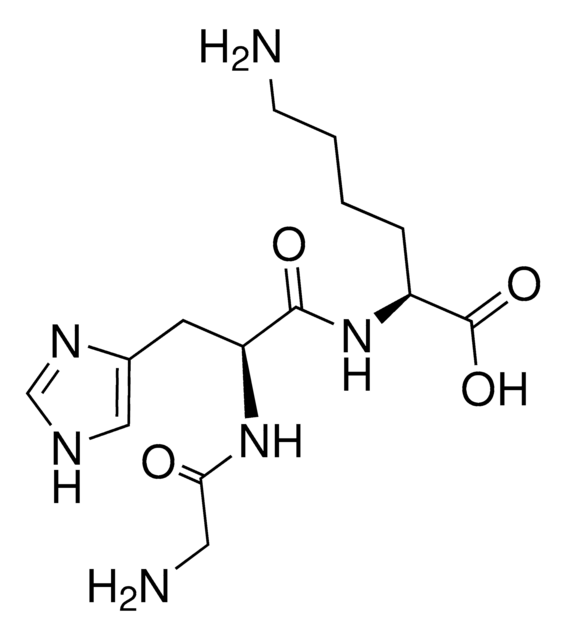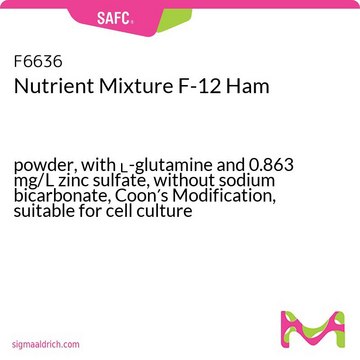G7387
Gly-His-Lys acetate salt
BioXtra, γ-irradiated, suitable for cell culture
Sinónimos:
Liver cell growth factor
About This Item
Productos recomendados
origen biológico
synthetic (organic)
Nivel de calidad
esterilidad
γ-irradiated
Línea del producto
BioXtra
formulario
powder
mol peso
400.43 g/mol
envase
pkg of 5 mg
técnicas
cell culture | mammalian: suitable
impurezas
<2 EU/mL
color
white
solubilidad
H2O: soluble 0.5 mg/mL, clear, colorless
temp. de almacenamiento
−20°C
cadena SMILES
CC(O)=O.NCCCC[C@H](NC(=O)[C@H](Cc1c[nH]cn1)NC(=O)CN)C(O)=O
InChI
1S/C14H24N6O4.C2H4O2/c15-4-2-1-3-10(14(23)24)20-13(22)11(19-12(21)6-16)5-9-7-17-8-18-9;1-2(3)4/h7-8,10-11H,1-6,15-16H2,(H,17,18)(H,19,21)(H,20,22)(H,23,24);1H3,(H,3,4)/t10-,11-;/m0./s1
Clave InChI
MGNUTAFMLGJBGV-ACMTZBLWSA-N
¿Está buscando productos similares? Visita Guía de comparación de productos
Amino Acid Sequence
Aplicación
- as a component of the serum-containing medium to culture human thyroid cells
- as a supplement to culture fisher rat thyroid cells
- as a component of the Dulbecco′s modified Eagle Medium (DMEM)/HamF12/mesenchymal stem cell media to culture mesenchymal stem cells
Código de clase de almacenamiento
11 - Combustible Solids
Clase de riesgo para el agua (WGK)
WGK 3
Punto de inflamabilidad (°F)
Not applicable
Punto de inflamabilidad (°C)
Not applicable
Certificados de análisis (COA)
Busque Certificados de análisis (COA) introduciendo el número de lote del producto. Los números de lote se encuentran en la etiqueta del producto después de las palabras «Lot» o «Batch»
¿Ya tiene este producto?
Encuentre la documentación para los productos que ha comprado recientemente en la Biblioteca de documentos.
Los clientes también vieron
Nuestro equipo de científicos tiene experiencia en todas las áreas de investigación: Ciencias de la vida, Ciencia de los materiales, Síntesis química, Cromatografía, Analítica y muchas otras.
Póngase en contacto con el Servicio técnico







